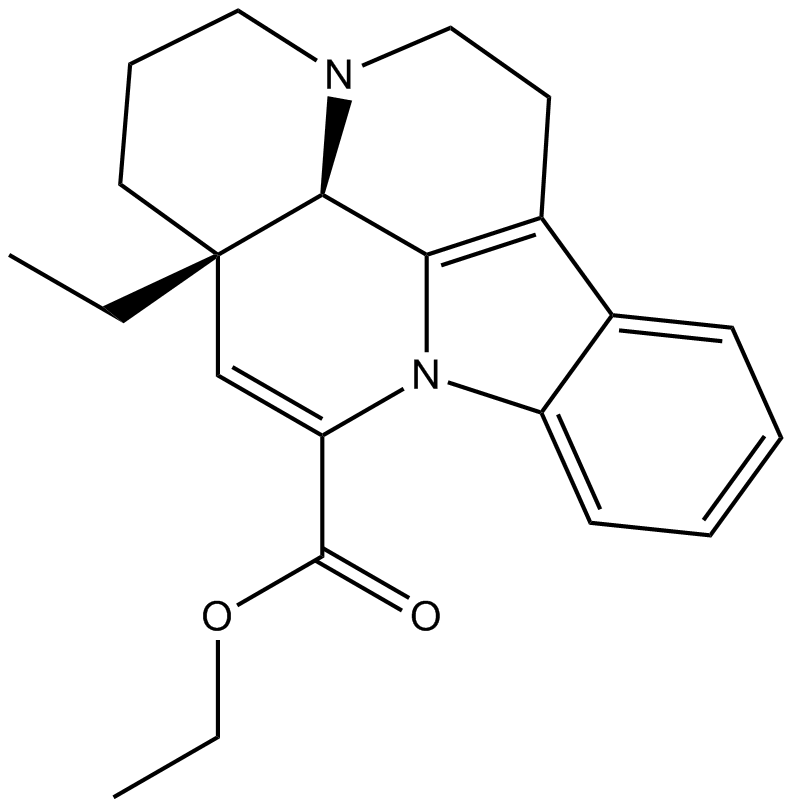Vinpocetine (Synonyms: Apovincaminic Acid ethyl ester, AY 27255, RGH-4405) |
| Catalog No.GC16658 |
PDE inhibitor
Products are for research use only. Not for human use. We do not sell to patients.

Cas No.: 42971-09-5
Sample solution is provided at 25 µL, 10mM.
Vinpocetine (Ethyl apovincaminate) is a derivative of the alkaloid Vincamine that blocks voltage-gated Na+ channels. The IC50 value of Vinpocetine on direct IKK inhibition in the cell-free system is 17.17 μM. Vinpocetine is a phosphodiesterase (PDE) inhibitor and inhibits NF-κB-dependent inflammatory responses by directly targeting IκB kinase complex (IKK), and has been widely used for the treatment of cerebrovascular disorders[1][2][3].
Vinpocetine (5-50 μM; 7 hours; VSMCs, HUVECs, A549 cells and RAW264.7 cells) potently inhibits TNF-α-induced NF-κB-dependent transcriptional activity in a dose-dependent manner with an approximate IC50 value of 25 μM. Vinpocetine do not have a significant effect on cell viability[1].Vinpocetine (50 μM; 7 hours; VSMCs, HUVECs, A549 cells and RAW264.7 cells) potently inhibits TNF-α-induced up-regulation of TNF-α, IL-1β, IL-8, MCP-1, VCAM-1, ICAM-1and MIP-2 transcripts in several cell types[1].
Vinpocetine (2.5-10 mg/kg; intraperitoneal injection; C57BL/6 mice) potently inhibits TNF-α- or LPS-induced up-regulation of proinflammatory mediators, including TNF-α, IL-1β, and MIP-2, and decreases interstitial infiltration of polymorphonuclear leukocytes in a mouse model of TNF-α- or LPS-induced lung inflammation[1].
References:
[1]. Kye-Im Jeon et al. Vinpocetine inhibits NF-κB-dependent inflammation via an IKK-dependent but PDE-independent mechanism PNAS May 25, 2010 vol. 107 no. 21 9795-9800
[2]. Patyar S, et al. Role of vinpocetine in cerebrovascular diseases. Pharmacol Rep. 2011;63(3):618-28.
[3]. Alexandre E. Medina Vinpocetine as a potent antiinflammatory agent PNAS June 1, 2010, Vol. 107, No. 22 9921-9922.
Average Rating: 5 (Based on Reviews and 12 reference(s) in Google Scholar.)
GLPBIO products are for RESEARCH USE ONLY. Please make sure your review or question is research based.
Required fields are marked with *




















